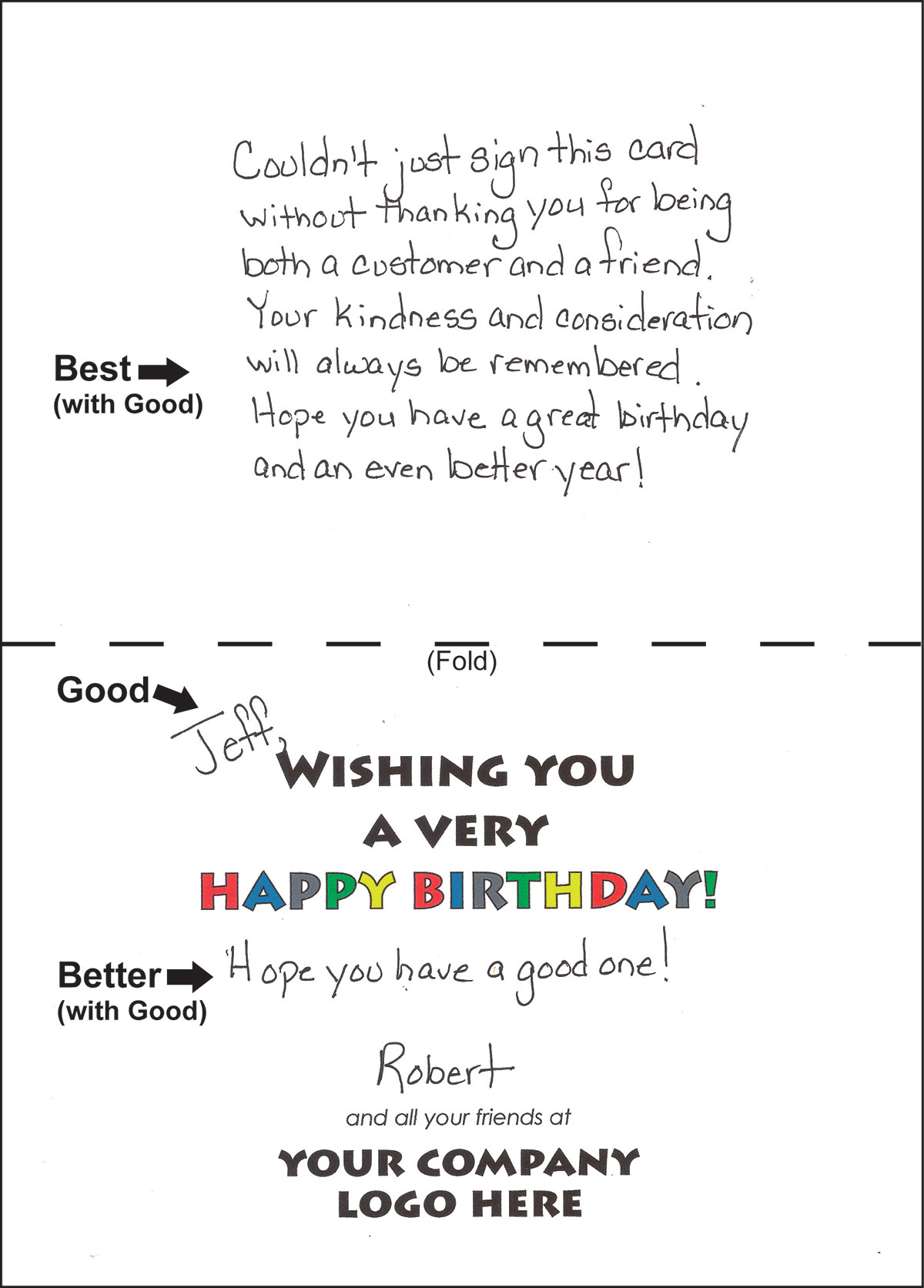RCM requires written communication, therefore conventional grammar, spelling and punctuation rules apply. The simplest way to insure your content is correct is to proofread it yourself (several times) and then mandatorily have at least one or two other competent readers of your language proofread it. Anything less, and you risk delivering a contact that can damage your image, your creditability and your message. To paraphrase noted author, diplomat and American icon Ben Franklin, “An ounce of prevention (proofing) is worth a pound of cure (having to rectify appearing uneducated, unclear, unconcerned and, in RCM, insincere).”
RCM demands personalization in its presentation, and the more it’s personalized, the more believable and effective it will be. At a minimum, everything requiring a signature should be hand-signed by the sender (or appear to be, should the sender delegate another to sign for them). The signature should be the sender’s most legible (meaning readable) signature. No “printed” signature duplication and no “banking” signatures. Your RCM recipient should be able to read your name at a glance and be confident it was handwritten by you, the sender.
RCM Holiday cards, Birthday cards and greeting cards should always have more than a handwritten signature. The recipient’s handwritten name(s) preceding the card message is an often-used and effective personalization method. Even better, write, or have written for you, a brief four, five or six word comment, e.g., “Hope you have a great day,” or “Wishing you the best,” or “Thanks for your friendship,” etc. placed near your signature in your most legible handwriting. Optimum personalization is a one or more paragraph handwritten note on the unprinted blank inside upper or left-side flap of the card.
RCM letters and notes should deliver their personalization in their content. Even if the data you have is limited, you can utilize what you do have to add effective personalization. If, for example, you have only the names and addresses of whom you consider are contact-worthy prospects, you can create merge fields utilizing their address or city. Do this by using a map to note the cities (or areas) bordering the city or area where your business is located. This gives you three fields. Buyers who live in your city (or area) and are “close by and neighbors” and buyers who are “one city away (or bordering your area) and almost neighbors.” Your third field is all other cities (or farther away areas) which allows you to note those recipients “will have a longer drive to your business, but it will be worth it.”
RCM letters and notes should also reflect a correct purchase/ownership cycle. This means, that depending on if and how often a product/service is repeatable, your content should be appropriate to it. You should determine a time when your focus shifts from referral solicitation (immediately after purchase to a time you determine) to new product/service consideration. This also allows for more personalization, as you can divide your data by purchase dates to assign cycle-specific content by merge format techniques or fields-specific production.

